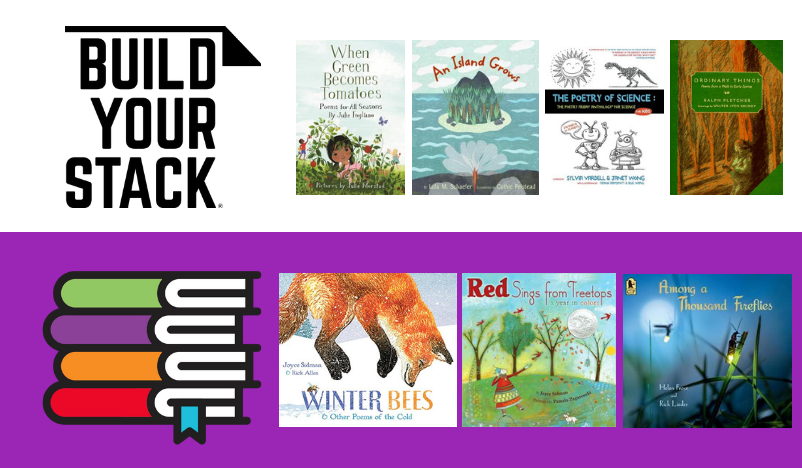This blog post is part of Build Your Stack,® a new initiative focused exclusively on helping teachers build their book knowledge and their classroom libraries. It was written by NCTE member Michelle Schaub.
Poetry and grammar? An unlikely combination, perhaps. But, like peanut butter and chocolate, when paired together, they yield surprisingly appealing results.
As a middle school teacher, I like to make my grammar lessons appetizing. I prescribe to a functional approach to grammar. This method, explained in Teaching Grammar in Context by Constance Weaver, focuses on how language works in real-world contexts. It maximizes the use of examples from mentor texts and encourages students to explore concepts in their own writing. As a poet, I believe in the power of verse, and I’m always looking for ways to weave poetry into the curriculum.
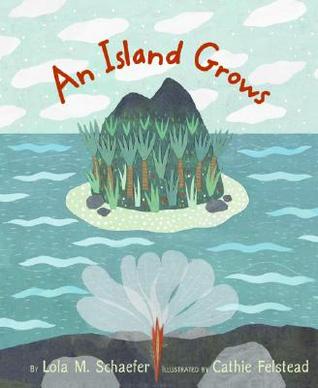 I had my first taste of pairing grammar and poetry when reading Everyday Editing by Jeff Anderson. In this book, Anderson suggests using the picture book An Island Grows by Lola M. Schaefer to reinforce the concept of simple sentences. In An Island Grows, Schaefer uses short, rhymed lines to reveal the story of an island forming from a volcanic eruption. Most of Schaefer’s lines contain one subject and one verb, such as “water quakes” and “magma glows.” I tried using Schafer’s book at the beginning of one school year. Students perused the poem, looking for simple sentence examples and nonexamples.
I had my first taste of pairing grammar and poetry when reading Everyday Editing by Jeff Anderson. In this book, Anderson suggests using the picture book An Island Grows by Lola M. Schaefer to reinforce the concept of simple sentences. In An Island Grows, Schaefer uses short, rhymed lines to reveal the story of an island forming from a volcanic eruption. Most of Schaefer’s lines contain one subject and one verb, such as “water quakes” and “magma glows.” I tried using Schafer’s book at the beginning of one school year. Students perused the poem, looking for simple sentence examples and nonexamples.
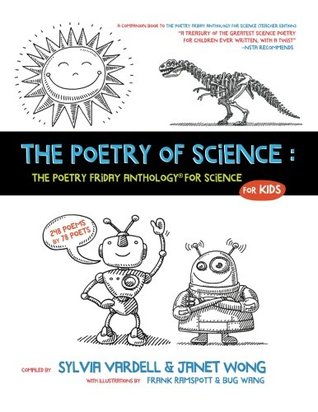
I followed this up by having students find simple sentences in another terse verse poem, “Ocean Engine” by Leslie Bulion from The Poetry Friday Anthology for Science. Finally, my students wrote their own terse verse poems, combining two-word sentences in rhyming pairs. It worked deliciously.
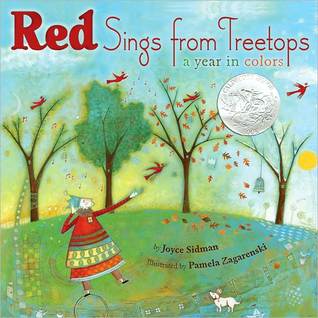 After this initial success, I found more ways to reinforce grammar concepts with poetry. Poets love using crisp, precise verbs. It’s not hard to find mentor poems that reinforce the power of action verbs over “be” verbs. When selecting poems, I like to focus on picture book collections because the illustrations make the poems even more enticing. Joyce Sidman’s Red Sings from Treetops: A Year in Colors is a poetry collection that celebrates colors as they kaleidoscope through the seasons. Sidman’s poems burst with vibrant action verbs. I have students conduct a “verb hunt,” making a list of all the verbs Sidman uses to bring colors to life. Then I have students use this list to write their own action verb poems. (No “be” verbs allowed!)
After this initial success, I found more ways to reinforce grammar concepts with poetry. Poets love using crisp, precise verbs. It’s not hard to find mentor poems that reinforce the power of action verbs over “be” verbs. When selecting poems, I like to focus on picture book collections because the illustrations make the poems even more enticing. Joyce Sidman’s Red Sings from Treetops: A Year in Colors is a poetry collection that celebrates colors as they kaleidoscope through the seasons. Sidman’s poems burst with vibrant action verbs. I have students conduct a “verb hunt,” making a list of all the verbs Sidman uses to bring colors to life. Then I have students use this list to write their own action verb poems. (No “be” verbs allowed!)
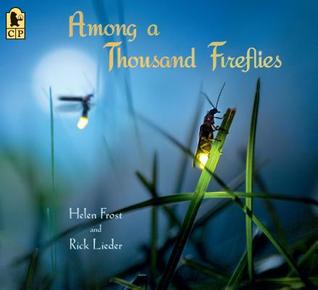 I also use poetry to reinforce the versatility of prepositional phrases. The picture book Among a Thousand Fireflies by Helen Frost is one long free verse poem embedded with prepositional phrases. After students identify the prepositional phrases within the book, I ask them what they notice about the placement of those phrases: How do they connect ideas? Help the poem flow? Students then imitate the form of Frost’s poem with new subject matter, highlighting the prepositional phrases they used.
I also use poetry to reinforce the versatility of prepositional phrases. The picture book Among a Thousand Fireflies by Helen Frost is one long free verse poem embedded with prepositional phrases. After students identify the prepositional phrases within the book, I ask them what they notice about the placement of those phrases: How do they connect ideas? Help the poem flow? Students then imitate the form of Frost’s poem with new subject matter, highlighting the prepositional phrases they used.
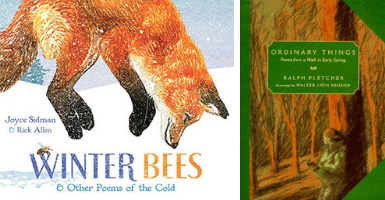 A similar plan can be followed when teaching participial phrases. Two mentor poems packed with participles are “Snowflake Wakes” from Winter Bees & Other Poems of the Cold by Joyce Sidman and “running water” from Ordinary Things: Poems from a Walk in Early Spring by Ralph Fletcher.
A similar plan can be followed when teaching participial phrases. Two mentor poems packed with participles are “Snowflake Wakes” from Winter Bees & Other Poems of the Cold by Joyce Sidman and “running water” from Ordinary Things: Poems from a Walk in Early Spring by Ralph Fletcher.
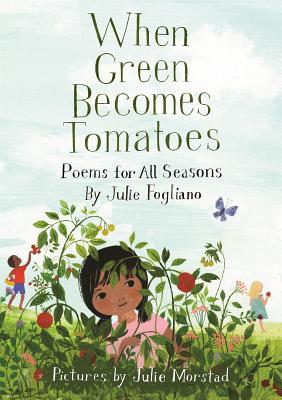 Poetry can appeal to a more sophisticated grammar palate as well. Need to reinforce the ways dependent and independent clauses can combine to form compound and complex sentences? Try using When Green Becomes Tomatoes by Julie Fogliano. This is another collection of breathtaking poems about the seasons. Fogliano’s poems are all unpunctuated, creating a stream-of-consciousness feel. Challenge students to rewrite the lines of one of Fogliano’s poems as if they had been written as prose, adding proper punctuation to create compound and complex sentences.
Poetry can appeal to a more sophisticated grammar palate as well. Need to reinforce the ways dependent and independent clauses can combine to form compound and complex sentences? Try using When Green Becomes Tomatoes by Julie Fogliano. This is another collection of breathtaking poems about the seasons. Fogliano’s poems are all unpunctuated, creating a stream-of-consciousness feel. Challenge students to rewrite the lines of one of Fogliano’s poems as if they had been written as prose, adding proper punctuation to create compound and complex sentences.
I hope you enjoyed this sampling of poems and poetry collections that make tasty pairings with grammar instruction. Bon appétit!
 Michelle Schaub is a children’s author, veteran middle school language arts teacher, and poetry in the classroom advocate. She is the author of the picture book poetry collections Fresh-Picked Poetry: A Day at the Farmers’ Market (Charlesbridge 2017) and the upcoming Finding Treasure: A Collection of Collections (Charlesbridge 2019.) You can visit her at www.michelleschaub.com or @Schaubwrites.
Michelle Schaub is a children’s author, veteran middle school language arts teacher, and poetry in the classroom advocate. She is the author of the picture book poetry collections Fresh-Picked Poetry: A Day at the Farmers’ Market (Charlesbridge 2017) and the upcoming Finding Treasure: A Collection of Collections (Charlesbridge 2019.) You can visit her at www.michelleschaub.com or @Schaubwrites.

